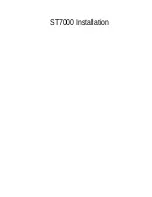
OBID
®
Installation
ID AWE 3000/6000.A-A
FEIG ELECTRONIC GmbH
Page 37 of 55
H40591-4de-ID-B.doc
E N
G
L I S H
10.3.1. Correlation of antenna geometry and reading range
In order to reach a maximum reading range with minimum surface, we recommend a square an-
tenna geometry ( induction loop in the antenna shield). Rectangular shapes do not lead to higher
ranges, since the shortest side is decisive for the reading range.
Under optimal conditions and depending on the type of cheque card transponder used, the maxi-
mum reading range is roughly proportional to the shortest side of the induction loop. This applies to
antenna sizes up to 30cm x 30cm. Larger antennas do not lead to higher reading ranges.
General rule: length of the shortest side
≈
reading range.
10.3.2. Surrounding materials
Data transmission of the OBID
®
-System is based on magnetic fields, which have to spread in the
antenna’s surroundings and between the antenna and the transponder. Magnetic fields have the
favourable characteristic, that they can penetrate almost every material undamped. Only conduc-
tive materials, such as metal, metal grids (armouring), water and other conductive liquids or metal-
lized surfaces (even some glasses) have an influence on the spatial expansion of magnetic field
lines. For this reason, you have to make sure that a suitable distance is kept between the antenna
and those materials when planning the place of application.
A suitable distance would be the distance, which can be expected as reading range for trans-
ponder. Armourings in the ground resp. window panes with metal grids are an exception, since
here, a shorter distance to the antenna is permitted: a minimum distance of 8cm is sufficient. In this
case, however, a reduced reading range is very likely.
As a compulsory measure, the antenna surface should be reduced when conductive materials are
to be found in the surroundings.
A particular case is the installation of antennas in metal walls – or casings. Please do always con-
sult the manufacturer before planning such applications.
















































